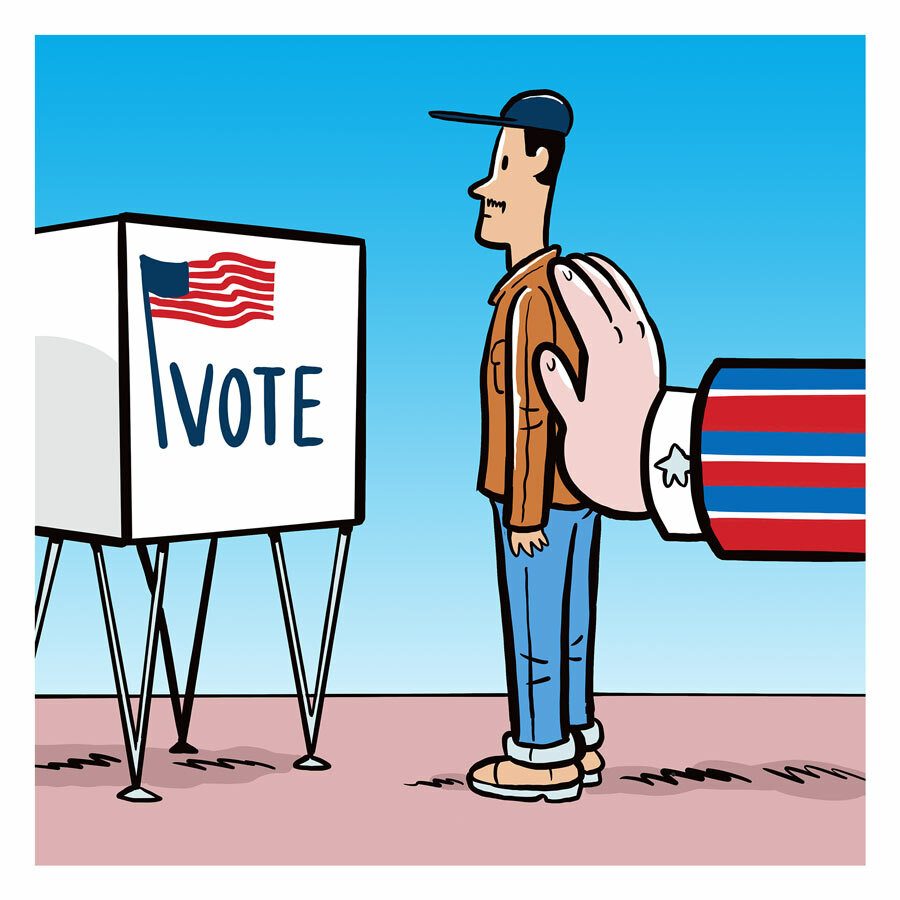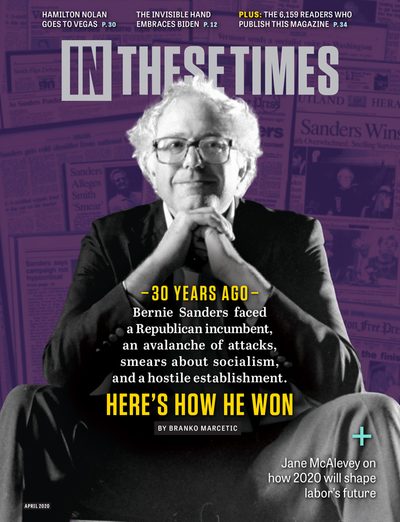
man•da•to• ry vot•ing
noun
1. The requirement that all who are eligible vote
“[Republicans] don’t want us to vote. They want to push voter ID laws that block Black and Latino voters. … Not voting is not a protest, it is a surrender.” —Keith Ellison, Minnesota Attorney General and former House Rep.
Isn’t forcing people to vote kind of … undemocratic?
Well, potentially. Some countries enforce penalties for failing to vote, such as a monetary fine or passport restrictions. But done right, mandatory voting isn’t about dragging people to the polls against their wills. Its goal is to increase the legitimacy of elections and make sure everyone’s voice is heard. Coupled with policies like a national holiday for Election Day, universal voter registration and robust resources for all election agencies — all of which would make voting simpler and more accessible — mandatory voting could turn the tide against voter suppression.
Where does mandatory voting exist?
Belgium was the first democracy to implement mandatory voting — back in 1893 — and its authors saw the policy as a way to empower the working class. Twenty other countries — including Bolivia, Brazil and Australia, but not the U.S. — now have mandatory voting, with uniformly high voter turnout. Mandatory voting became the law of the land down under in 1924, when voter turnout was below 50%. Today, it sits around 90%.
How does turnout in the United States compare?
Not well! Turnout in U.S. presidential elections hovers around 60% of eligible voters. In midterm elections, it falls below 40%. A turnout this low calls the legitimacy of elections into question and ensures that only a portion of the electorate can make a “majority” decision for all of us.
What causes would get a boost from mandatory voting?
It’s hard to say! In 2014, Pew reported that “about half of nonvoters (51%) either identify as Democrats or lean Democratic [while] just 30% affiliate with the GOP or lean Republican.” Other evidence suggests, despite this Democratic-leaning among reluctant voters, full voting may not significantly change election outcomes. Regardless, we do know that voter turnout is especially low among the poor — in November 2014, for example, just 36% of eligible voters showed up, but for people making less than $10,000 a year, the number fell to 25%. Historical research also reveals that marginalized communities who get the vote wield it to enhance equality. The expansion of suffrage to women led to an increase in government spending, for example, and the abolition of literacy tests for voter registration shifted the distribution of government funds to areas with larger Black populations. It’s possible that a raft of policies to promote full participation could have a similar impact.
This is part of “The Big Idea,” a monthly series offering brief introductions to progressive theories, policies, tools and strategies that can help us envision a world beyond capitalism. For recent In These Times coverage of voter supression and voting reform, see, A Win Against Voter Suppression in the South, How Ranked Choice Voting Could Make the 2020 Election More Democratic, and Ranked Choice Voting Is On a Roll








